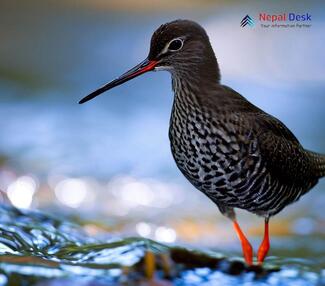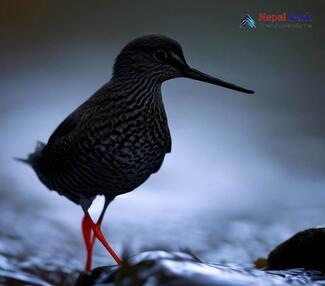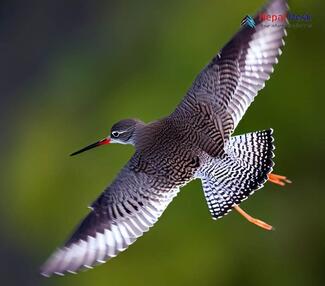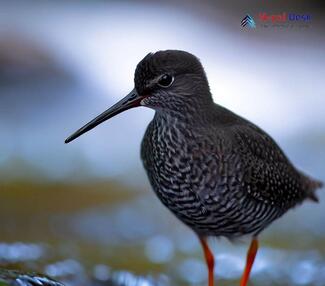The Spotted Redshank (Tringa erythropus) boasts an eye-catching appearance, making it a graceful wader known for its long legs, slim figure, and remarkable plumage. These one-of-a-kind features have captivated birdwatchers worldwide, especially in Nepal where they contribute to the country's diverse and breathtaking Himalayan biodiversity. Let us look at its various aspects:
Getting to Know the Spotted Redshank
Belonging to the Sandpiper family and its allies (Scolopacidae), the Spotted Redshank's unique traits set it apart from other wading birds. During the breeding season, they display dark-grey speckled feathers with striking red legs, appearing nearly black from afar. Their black beak is bordered by a thin white line at the base. In contrast, their non-breeding plumage comes in lighter shades of grey with white underbellies.
These amazing birds enjoy a varied diet of insects, crustaceans, mollusks, and other small aquatic creatures. They use their long bills to sift through mudflats and shallow waters in search of prey.
Migration and Living Spaces
Being migratory in nature, Spotted Redshanks breed across northern Europe and Asia before heading south to Europe, Africa, and Asia – even reaching Australia – as winter sets in.
Nepal acts as a crucial layover for these birds during migration. They commonly inhabit the nation's wetland areas such as marshes, lakeshores, riverbanks, and flooded rice fields. Prime locations for spotting them in Nepal include the Koshi Tappu Wildlife Reserve and Chitwan National Park.
Conservation Matters
While their elegance and extensive global presence make them quite unique during migration periods, the International Union for Conservation of Nature (IUCN) Red List classifies Spotted Redshanks as of 'Least Concern' due to their sizeable population and relative stability. However, these birds still face threats from habitat loss caused by human activity.
As admirers of wildlife and the beauty of nature, we should commit to preserving their habitats to ensure these captivating birds remain part of our diverse ecosystems. Efforts to keep wetland zones untouched will benefit not only Spotted Redshanks but countless other species that depend on these areas.
Discovering Nepal's Birdwatching Treasures
Nepal's rich avian diversity goes beyond Spotted Redshanks. The varied landscape – from lowland grasslands to soaring mountain terrains – makes the country a birdwatcher and nature lover's paradise.
On your trip to Nepal, be sure to immerse yourself in its thriving wildlife by observing the graceful Spotted Redshank in its natural environment alongside other delightful creatures. Embrace a deeper connection with nature and revel in the marvels our planet has in store.




